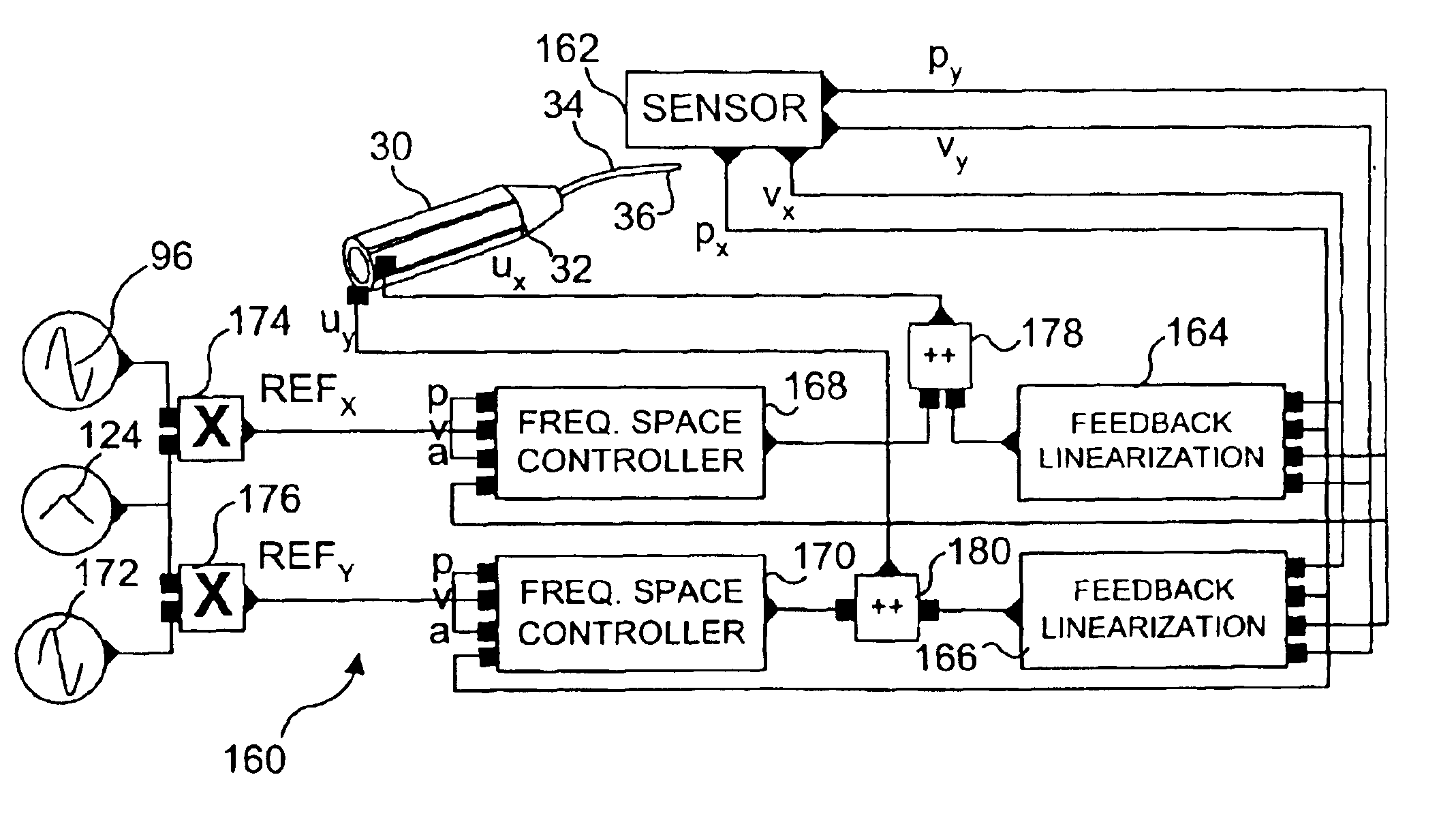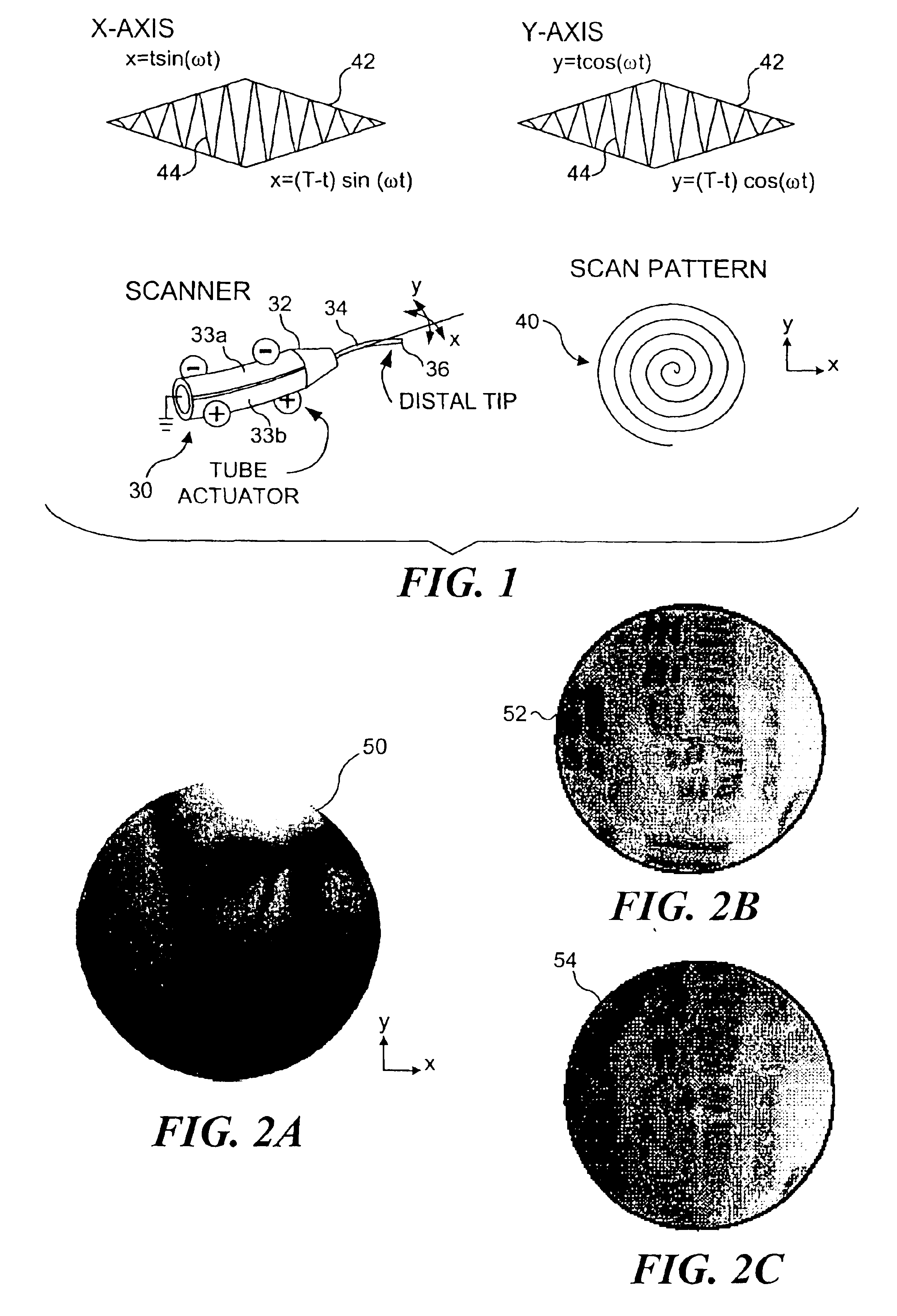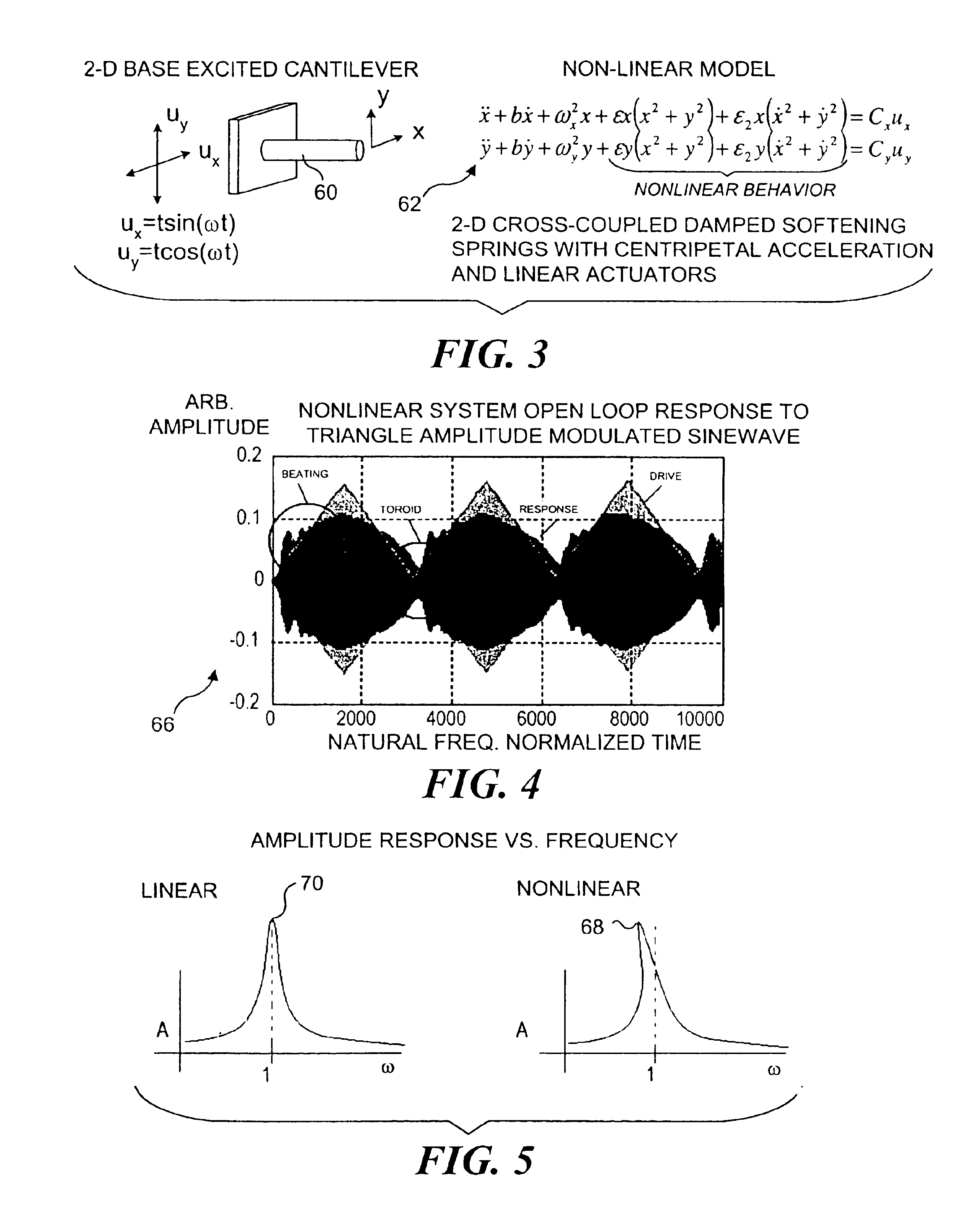Control of an optical fiber scanner
a control and optical fiber technology, applied in the direction of instruments, optical elements, applications, etc., can solve the problems of limiting the application of optical scanning for small size, large amplitudes or large angular deflections at the fiber's tip when excited into resonance, and large amplitudes or large angular deflections at the fiber's tip, so as to achieve robust cancellation and remove nonlinear behavior
- Summary
- Abstract
- Description
- Claims
- Application Information
AI Technical Summary
Benefits of technology
Problems solved by technology
Method used
Image
Examples
Embodiment Construction
The present invention is directed to controlling cantilevered light guides used in a many different applications. While it should be clearly understood that the present invention is not limited to controlling just an optical fiber, an initial application of the present invention for that purpose provides a disclosure of several different embodiments of exemplary controls that are used in connection with controlling the drive signal applied to cause an optical fiber to move in a desired pattern at or near its resonance. However, it is not intended that the discussion of the present invention in connection with controlling the movement of an optical fiber in any way limit its application to that type of light guide.
A resonant optical fiber that is controlled by the present invention can be either tapered or non-tapered and can be driven in several scanning patterns, as appropriate for the application of the scanning optical fiber. The following discussion focuses on the control of res...
PUM
 Login to View More
Login to View More Abstract
Description
Claims
Application Information
 Login to View More
Login to View More - R&D
- Intellectual Property
- Life Sciences
- Materials
- Tech Scout
- Unparalleled Data Quality
- Higher Quality Content
- 60% Fewer Hallucinations
Browse by: Latest US Patents, China's latest patents, Technical Efficacy Thesaurus, Application Domain, Technology Topic, Popular Technical Reports.
© 2025 PatSnap. All rights reserved.Legal|Privacy policy|Modern Slavery Act Transparency Statement|Sitemap|About US| Contact US: help@patsnap.com



